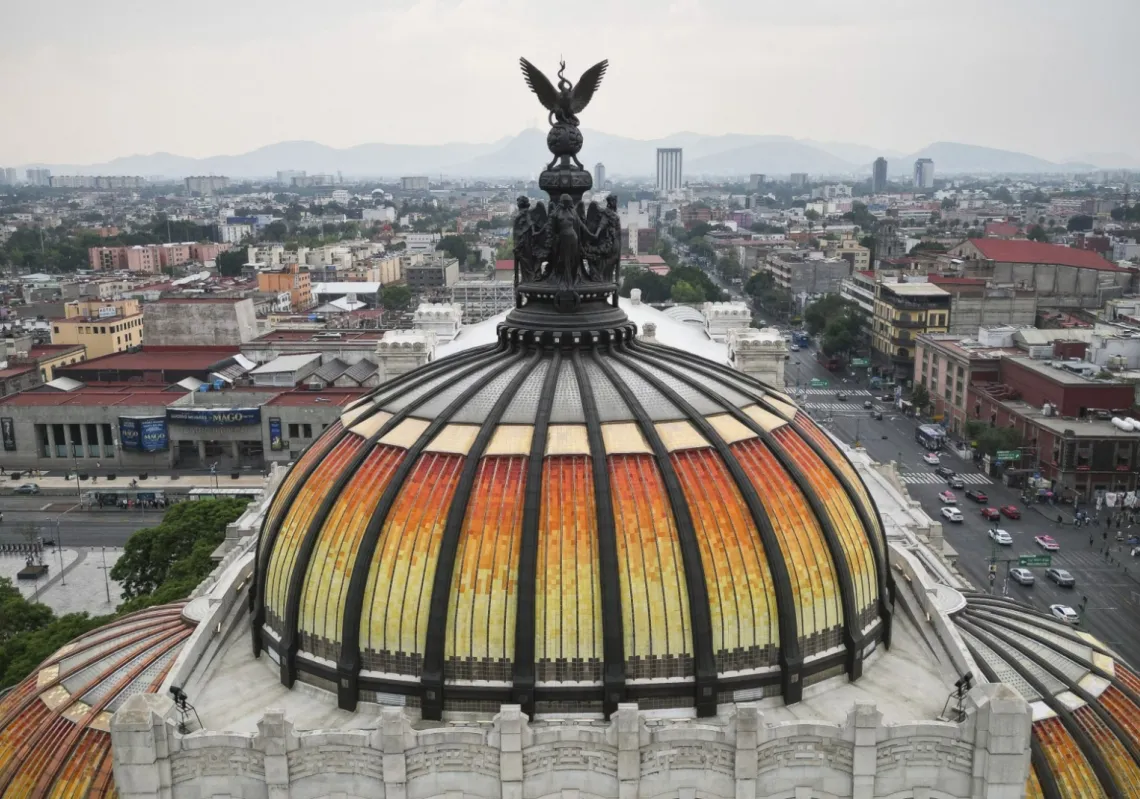On this day exactly 99 years ago, the residents of Damascus awoke to the sound of explosions ripping through their sleeping city. Colonial France, occupying their country since 1920, had begun an aerial bombardment of Damascus after Syrian rebels penetrated the old Bzurieh Bazaar and occupied the ancient Azm Palace on 18 October 1925.
This was during a fabled Syrian uprising against the French, and never in living memory had the people of Damascus lived through such a terrible experience. The last major attack on their city had occurred during Ottoman times, back in 1831, and the only exception was a sole bomb that landed on Damascus during the final hours of World War I.
On 26 September 1918, it hit the home of wheelchair-bound journalist Adib Nazmi, killing him instantly. Many hoped that this would be the final assault on their city, although many were yet to come: twice by the French in 1925 and 1945 and twice by the Israelis during the Palestine War of 1948 and the October War of 1973.
More attacks would follow in subsequent years, first from the armed opposition in al-Ghouta, the agricultural belt surrounding Damascus, and today by Israel Air Force in pursuit of Lebanese members of Hezbollah. The opposition was famed for their highly imprecise rockets, which frequently landed on residential areas and schools in 2012-2018, rarely hitting a military target. The Israelis then stepped in, striking at residential neighbourhoods as well and tearing down entire buildings, notably the Iranian consulate in central Damascus, which was demolished on 1 April 2024.
Elderly Syrians still remember the strikes of 1945, 1948, and 1973, but there are no more living survivors of the French assault of 1925, although their grandchildren are still around. And it’s a strange coincidence that one of the civilians killed by the latest Israeli strike on 2 October 2024 happened to be the granddaughter of Fawzi al-Ghazzi, author of Syria’s first republican constitution of 1928. Her grandfather barely survived the French onslaught of 1925, never imagining that one day, his granddaughter would be killed, also be aerial assault, in 2024.

Al Majalla delves into the numerous attacks that were launched on Damascus, first by the Ottomans, then the French, and finally the Israelis.
Ottomans (1831)
The people of Damascus revolted against a real estate tax imposed on the city’s Muslims by the Ottoman governor Salim Pasha. They staged a major demonstration in the neighbourhood of Bab al-Jabieh in the Old City, setting up checkpoints and trenches.
Talks with Ottoman authorities failed, and an angry mob attacked government headquarters, forcing Salim Pasha to flee with his family. He responded by shelling Damascus for the entire night, viciously throwing entire chunks of burning wood onto his targets to add to the bonfire, destroying all of the shops surrounding the Damascus Citadel. He was subsequently arrested and executed in revenge by the people of Damascus.
French (1925)
On 18 October 1925, Syrian rebels from al-Ghouta attacked the Bzurieh Bazaar, hoping to arrest or kill the French High Commissioner Maurice Sarrail, whom they were led to believe was staying at the Azm Palace. No sooner had they entered the Bzurieh Market than the bombs began falling at the orders of Sarrail from the distant comfort of his office in Beirut. The Bzuriekh Market was destroyed, and the Azm Palace was torched.
The bombing spread far and wide, reaching the conservative neighbourhood of al-Midan outside the Old City. Ambulances were shot to prevent medics from reaching the wounded, and the French Commissioner ordered residents of the Christian quarters to raise a red cross on their rooftops and balconies to avoid being hit by the aerial bombardment. Around 140 civilians were killed on that day, and 336 families were uprooted, while another 150 homes were completely demolished, many being splendid palaces owned by the Damascene elite.
American warships were dispatched to the shores of Beirut to protect US interests in the Levant, and Maurice Sarrail was subsequently recalled to France. At his home in Paris, demonstrators were waiting carrying signs that read: “Assassin.” The Damascus bombing of 1925 prompted celebrated Egyptian poet Ahmad Shawki to compose a famous ode to Damascus, which was subsequently sung by Egyptian composer Mohammad Abdul Wahab.

French (1945)
Towards the end of World War II, an attack was staged at the orders of General Charles de Gaulle in response to secret deals reached from behind his back and without his knowledge between his wartime ally, British Prime Minister Winston Churchill and Syrian president, Shukri al-Quwatli. De Gaulle was furious with inviting Syria to attend the founding conference of the United Nations in San Francisco on 30 April 1945, and less than a month later, he ordered the assault on Damascus on 29 May 1945.
Syria’s parliament building was struck first in a failed attempt at killing or arresting its speaker, Saadallah al-Jabiri. When Senegalese troops did not find him, they set the building ablaze and confiscated its official papers and stamps. All of parliament’s guards were slaughtered except one soldier who played dead and lived on to tell the story.
The bombing spread to the Orient Palace facing the Hejaz Square, where Saadallah al-Jabiri stayed while in Damascus, and to the ancient Saruja Bazaar outside the Old City, where cabinet ministers sought refuge at the home of their colleague, ex-prime minister Khaled al-Azm.
Once again, medics were targeted and killed, including a celebrated doctor named Musallam al-Barudi, who was murdered at the gates of the Orient Palace. Two British citizens were killed in the onslaught and 27 Syrians. This attack led to direct British intervention in Syria on 1 June 1945, forcing the French to evacuate on 17 April 1946.
Israelis (1948)
The first Palestine War was launched by a coalition of Arab states in mid-May 1948 in response to David Ben Gurion’s declaration of the State of Israel. Syria took part in the war, committing 3,000 troops. Exactly one month later, the Israelis bombed Damascus for the very first time on 15 June 1948, killing 22 civilians. Syrian authorities declared martial law, but Israel struck again on 19 July 1948. Two days later, 150 wounded fighters were brought to Damascus from Palestine, most of whom died at local hospitals.

Israelis (1973)
Three days after the outbreak of the third Arab-Israeli War, Syrian missiles landed on an Israeli airbase north of Israel on 9 October, killing a handful of soldiers and pilots. The Israeli cabinet of Golda Meir responded with a major strike on central Damascus, targeting Army Headquarters in the upscale Abu Rummaneh neighbourhood.
Around 35 tonnes of explosives were dropped on the building, resulting in its heavy destruction and in nearby locations as well, like the headquarters of Air Force Command and the premises of Syrian Television. Around 26 people were killed and another 117 wounded in the attack, with civilian infrastructure largely destroyed.












